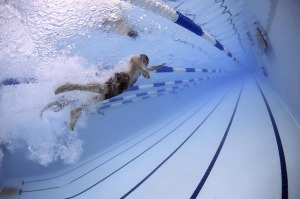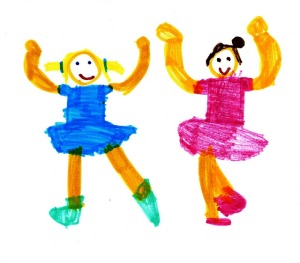Hi everyone! I recently saw The Fault In Our Stars movie and wanted to share some thoughts on it. I am a huge fan of the book by John Green (which I wrote about here) and so I was really looking forward to this movie. And I loved it! Though they had to make some changes in the movie and omit some parts, overall the movie held on to the honesty of the book, which is really what makes the story so special.
We all know it’s a romance and we all know it’s about cancer – but the story is more realistic and deep than the typical romantic-comedy (or illness film, for that matter). Our protagonists Hazel and Gus explore so many different questions and concepts when it comes to being chronically ill, such as “oblivion” and making a mark on the world and who will remember us when we pass on. Also, although the characters all have cancer, the story does not focus on cancer itself. This is not one of those stories where the character triumphs against all odds and everyone lives happily ever after. Instead, it’s about teens who have cancer and how they spend their lives – definitely more realistic than what we’ve ever seen in the mainstream media. And though there may not be the typical “happily ever after” that we’re accustomed to seeing, there is definitely a lot of joy which they find in their lives, even with cancer.
Having had autoimmune arthritis for most of my life, I related a lot to Hazel and the other young characters faced with illness. From the very first lines of the movie, I knew exactly what Hazel meant when she says, “I believe we have a choice in this world about how to tell sad stories. On the one hand, you can sugarcoat it. When nothing is too messed up that can’t be fixed by a Peter Gabriel song. I like that version as much as the next girl does. It’s just not the truth.”
When it comes to illness, I’ve realized that it is very difficult for persons (especially healthy persons) to be exposed to the reality of a life of illness. The world loves winners and we love to hear stories about persons overcoming their illnesses and going into remission, about persons with prosthetic limbs becoming amazing athletes and about persons triumphing in tough situations. I won’t lie, I love those stories too (and you know I share them on this site all the time). They absolutely inspire me and give me energy and motivation to keep pushing ahead. But illness is definitely not a glamorous situation, and persons who excel have to work hard (and experience a lot of mental pain as well as physical pain) to get where they’re going. In short, it’s not easy.
One of the most thought-provoking lines of the film uttered by Augustus Waters is, “That’s the thing about pain. It demands to be felt.” I have to agree when it comes to emotional pain. We try to avoid pain and painful situations in our lives, but the reality is that sometimes the only way to get through a situation is to experience that pain and work though it, even if it means tears are going to be streaming down our face. Running from pain means it’s always there, just below the surface. Painting a smile on our faces and pretending that nothing is wrong doesn’t work out in the long run, does it? Sometimes, it’s only by facing that painful situation head on that we learn to really accept and deal with it – and this is what makes us stronger and smarter for the future.
I liked Hazel’s story because it showed the reality of living with chronic illness as a young person. Yes, there are a million doctor visits and needles and pain, but there are also beautiful moments of joy and “normal” life too. They still went out and had great times together, like every other person their age. Their love and bond was extremely beautiful – but not in a sappy, puke-inducing kind of way 😉 . Watching them and knowing what they were both experiencing health-wise, I felt glad that they had each other to lean on. When you are sick or going through tough times is really when you need love in your life (whether it is from significant others, family or friends).
I think that having arthritis made the movie more personal to me as I related to the pain of the characters and their thoughts, fears and frustrations. My heart went out to Gus as he broke down crying at the gas-station as he tried to buy a pack of cigarettes – and hold on to a shred of normalcy and independence in his life with the cancer. If you have a chronic illness, then you can probably relate.
All in all, this movie is definitely worth watching and quite funny at times. I am extremely happy that a mainstream movie has come along starring young people with illness. The movie is not overly sad or over-dramatic or sappy – it’s just right. I did cry throughout most of the movie, but I think it’s because I was able to relate to Hazel’s words a lot. For those of you who don’t live with illness, did you cry as much as I did? Haha, please let me know!
Whether you have an illness or not, please let me know in the comments what you thought of the film, or if you are planning to go see it. Thanks guys! 🙂
❤ Ms. Rainbow.



